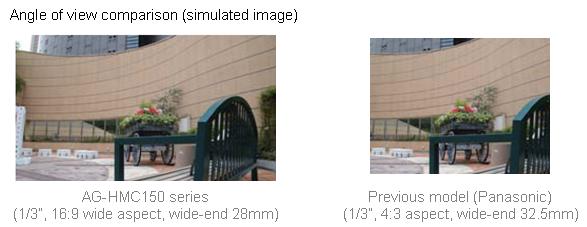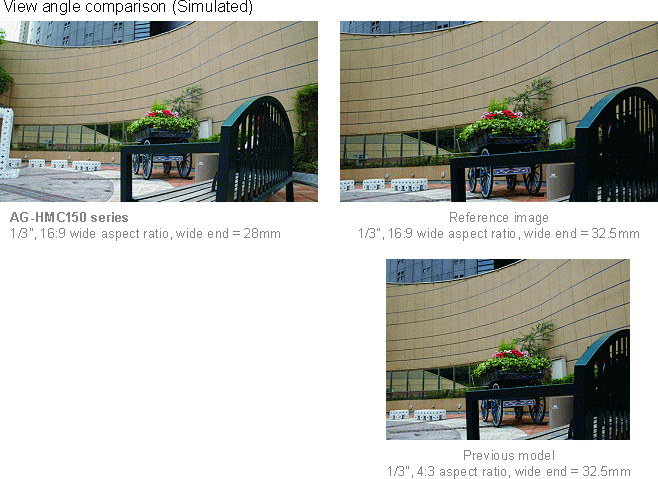|
For wedding and other live events: Wide-angle + "Extra long record
time"
Typical demands for middle or large-scale live event recordings, such as
wedding ceremonies,
parties/meetings, and other live events.
- To capture as many attendees as possible in a frame.
- Seamless recording as long as possible because action cannot be repeated.
AG-HMC150 series' 28mm wide-angle lens system. It enables capturing of
various scenes from a wide-angle
(example: want to include all wedding attendees in a single frame with
limited space)
frame the all attendance in a wedding ceremony at a church, space is limited)
to a tele-
angle (example: zoom upon the bride and groom).
In addition, the AVCHD format allows for extra long record time, maximum recording time
is up to three hours
on a 32GB SD memory card in the PH mode (maximum 25Mbps) and 12 hours in
the HE mode.
 
[ Usage examples of "Wide-angle" plus "Extra long record
time" ]
- Documentary program making
- Traffic surveillance and investigation of vehicles, pedestrians.
- Local events, college/school activities.
 
For lecture, sports, recital broadcasting/recording : Wide-angle + HDTV 16:9 wide aspect ratio
AG-HMC150 series' 1/3" 16:9 wide-aspect imagers and 28mm lens system
provide much wider-angle
capture capability than can be achieved with 4:3 aspect ratio imagers.
Also in the case of recording in standard definition (SDTV), details of
the subjects become difficult to
recognize when moved to wide-angle view.
AG-HMC150 series' wide-angle + HDTV 16:9 aspect ratio provides much higher
resolution than conventional
SDTV 4:3 aspect cameras.
 
Due to employing a 72mm filter Ø (same diameter as AG-DVX100 series camera
recorder), various professional optical
filters can be used.

|
|
The acquired image angle becomes wider as the focal length (distance between
lens and imager) becomes shorter.
The AG-HMC150 series achieves a much wider angle of view with the newly
developed wide-angle lens system.
Angle of view comparison in different focal lengths


A wider angle of view helps for in many recording situations, such as when
you cannot move from any further
away from your subject, or you want to move closer to your subject and
maintain the back ground.
|










